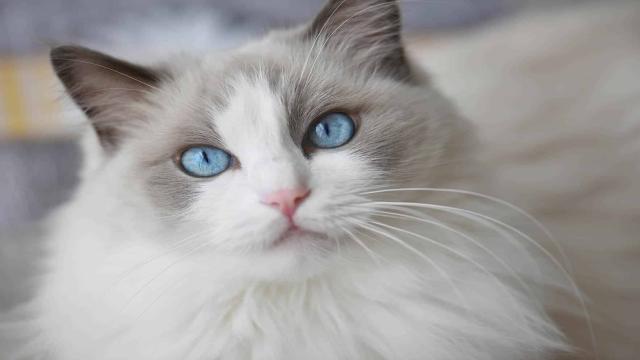Understanding Cat Eyelashes: Debunking Myths and Exploring Feline Eye Anatomy

Cat eyes have always been a captivating subject of fascination. One question that often arises among cat owners is whether cats have eyelashes. The answer may surprise you. So, do cats have eyelashes? The truth is a bit complex. Let’s explore the anatomy of cat eyes and shed some light on this debated topic.
Cat Eyelids: Fur Instead of Eyelashes
Humans have clear and visible eyelashes that serve various functions, such as keeping debris out of the eyes and alerting us to potential dangers. Cats, on the other hand, do not possess true eyelashes. While they lack the typical eyelashes found on human eyelids, they do have a row of thicker facial hair that acts as rudimentary lashes along their upper eyelids. So, technically, cats don’t have eyelashes. However, they have facial hair that serves a similar purpose.
Third Eyelid: Nature’s Extra Protection

In addition to the absence of conventional eyelashes, cats possess a third eyelid, also known as the nictitating membrane or the nictitans. This translucent membrane acts as a natural windshield wiper, protecting the eye from debris and keeping it moist without the need for the cat to close its eyes. The third eyelid is especially crucial for cats during activities like hunting or navigating through dense vegetation. It ensures their vision remains unimpeded while providing an additional layer of defense against potential harm.
Whiskers: A Feline Navigation System

While discussing cat eye features, it’s essential to mention whiskers. Whiskers, officially known as vibrissae, are not limited to the nose and mouth but also appear above the eyes, on the chin, near the ears, and on the front legs. These specialized hairs are packed with nerves and blood vessels, making them highly sensitive and crucial for a cat’s navigation and safety.
Whiskers located above the eyes serve as an additional protective mechanism for cats’ eyes. Since cats struggle to focus on objects up close, these whiskers help them navigate their surroundings by acting as radar sensors. They alert cats to potential dangers, allowing them to change direction and avoid harm.
Cat Eyelash Disorders: Uncommon but Troublesome
While cats don’t possess true eyelashes, they can still experience disorders related to abnormal growth of cilia within their eyelids. These disorders are relatively uncommon but can cause discomfort, irritation, and even eye ulcers if left untreated. Some common eyelash disorders in cats include:
Distichiasis
Distichiasis refers to the growth of eyelashes in abnormal locations, typically arising from the meibomian glands on the eyelid margin. This condition can lead to constant corneal irritation and requires treatment to relieve discomfort. Treatment options include lubrication, plucking the errant lashes (although they may grow back), surgical removal of the hair follicle, or laser treatments to destroy the hair follicle.
Ectopic Cilia
Similar to distichiasis, ectopic cilia involves abnormal growth of eyelashes that emerge from the conjunctiva on the inner side of the eyelid, ultimately contacting the cornea. Surgical removal of the harmful eyelash is the typical treatment for this condition.
Early detection and treatment are crucial to ensuring a full recovery from eyelash disorders. Your veterinarian may prescribe medications, lubrication, or even surgery to correct the problem and prevent further damage to the eye.
The Takeaway: Cats and Their Eye Features
To sum it up, cats may not have true eyelashes like humans, but they possess specialized facial hair that serves a similar function. Their eyes stay protected through the presence of a third eyelid and whiskers, which act as a navigation system and provide an extra layer of defense against potential harm.
While disorders related to eyelash abnormalities are relatively rare in cats, it’s important to keep an eye out for any signs of eye problems. If you notice anything unusual, it’s best to consult your veterinarian for a proper diagnosis and appropriate treatment.
For more information on feline eye health or training techniques, refer to our comprehensive guides on cat care.
Featured Image Credit: Luxurious Ragdoll, Shutterstock



